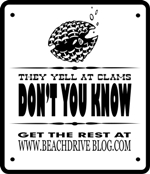
Eggcellent Biomass

What’s with all the Seals and Sea Lions?
Did you get an early wake up call from the barking seals and sea lions this morning? There is a massive herring spawn taking place right now causing the light, milky patches in the sound and attracting a lot of wildlife, including seals, sea lions and eagles.

We captured this photo at Emma Schmitz Memorial Viewpoint where onlookers watched the packs of seals and sea lions take breaks from their feast. The lighter colored water is not typical. The PT Leader has a great description of what’s taking place:
“The CWI’s Anne Shaffer explained that “white water” is the colloquial term for the milt sprayed by males to fertilize the newly laid eggs.
“Scores of marine mammals and thousands of birds congregate to feed on the thick carpets of eggs laid on eelgrass and Sargassum seaweed along the shore,” Shaffer said. “The eggs are still developing but will soon hatch, marking the beginning the 2020 spring plankton season that, in turn, supports the rest of our Salish Sea food chain.”

It’s an amazing sight and I WISH my better camera was working right now.

We’ve noticed a few paddle boarders trying to get a close look at the sea lions and seals.




Recent Comments